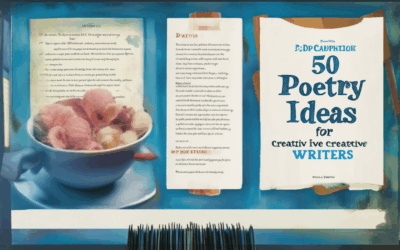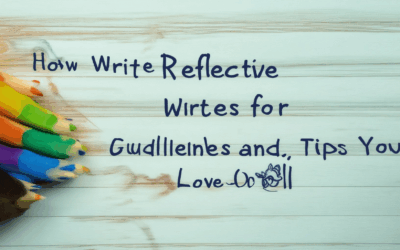Storytelling is the heartbeat of creative writing, a powerful tool that transforms raw ideas into compelling narratives. For creative writers, mastering the art of storytelling is not just about crafting a sequence of events—it’s about igniting imagination, capturing hearts, and minds, and making complex emotions resonate deeply. Whether you’re penning a short story, a novel, or even a poem, effective storytelling is the bridge that connects your audience to your vision. In this ultimate guide, we’ll explore the essence of storytelling in creative writing, delving into the techniques, strategies, and principles that will help you craft stories that inspire and endure. From developing memorable characters to shaping compelling plots, we’ll uncover the secrets to creating engaging narratives that leave a lasting impact. Let’s embark on this journey together, where every word and every sentence holds the power to transform.
Key Takeaways
– Craft a compelling plot that drives your narrative forward and keeps readers engaged.
– Develop characters that are multi-dimensional and relatable, bringing your story to life.
– Identify the purpose behind your storytelling to convey a meaningful message or theme.
– Focus on creating a protagonist who evolves and resonates with your audience.
– Master the stages of storytelling, from exposition to resolution, to build a cohesive and captivating narrative.
– Utilize structure to ensure your story flows logically and maintains reader interest.
– Infuse your storytelling with meaning to provide depth and inspire your audience.
– Leverage emotion to connect with readers on a personal level and create lasting impacts.

The Five Cs of Storytelling
The 5 Cs of storytelling provide a structured approach to creating engaging narratives. These components are essential for crafting a compelling story:
- Character : Develop well-defined protagonists and antagonists who drive the plot forward. Their growth and development should be evident throughout the story.
- Conflict : Establish a central conflict or problem that propels the narrative. This could be internal, external, or both, serving as the driving force of the story.
- Cause : Identify the underlying causes of the conflict. Explore how and why the problem arose, adding depth and context to the story.
- Context : Set the scene with rich details about the time, place, and cultural background, immersing the reader in the story’s world.
- Connection : Create an emotional bond between the story and its audience. This connection ensures the narrative resonates on a personal level, leaving a lasting impact.
By focusing on these five elements, storytellers can craft stories that captivate audiences and leave a meaningful impression.
What are the 5 P’s of storytelling?
The 5 P’s of storytelling are essential elements that help create engaging, memorable, and impactful narratives. These principles guide authors and storytellers in crafting compelling stories across various platforms and mediums.
P1. People: At the heart of every great story is a relatable and multifaceted character. Whether it’s a protagonist, antagonist, or secondary character, people drive the narrative forward. A well-developed character allows readers to connect emotionally, fostering empathy and engagement.
P2. Place: Setting plays a crucial role in shaping the tone and atmosphere of a story. From the bustling streets of a city to the serene landscapes of a rural village, the setting becomes a character itself, influencing the plot and the characters’ actions.
P3. Pictures: While not literally pictures, visual elements are vital in storytelling. Descriptions, imagery, and even illustrations help paint a vivid mental picture for the audience, making the story more immersive and memorable.
P4. Personalization: Tailoring the story to resonate with the audience enhances its impact. Personalized elements, such as cultural references or individual experiences, make the narrative feel authentic and relatable.
P5. Peril: Conflict and challenge are integral to any compelling story. Whether it’s an external threat like a storm or an internal struggle, peril adds tension and drives the narrative forward, creating suspense and keeping the reader engaged.
By mastering these five elements, storytellers can craft narratives that captivate audiences, evoke emotions, and leave a lasting impression.

What is Storytelling in Creative Writing?
Storytelling is a fundamental art form that allows creators to convey ideas, emotions, and experiences through narratives. It is a universal method of communication that spans cultures, generations, and mediums. Whether through prose, poetry, theater, film, or oral traditions, storytelling serves to entertain, educate, preserve history, and inspire reflection.
The essence of storytelling lies in its ability to captivate audiences by transporting them into imagined worlds. It often employs elements such as:
- Characters : Well-defined protagonists and antagonists who drive the plot forward.
- Setting : The physical and emotional environments that provide context for the story.
- Plot Structure : A sequence of events that create tension and lead to a resolution.
- Themes : Underlying messages or lessons that give the story depth and meaning.
- Imagery and Symbolism : Visual elements that evoke emotions and reinforce the narrative.
Storytellers often employ techniques such as:
- Focalization : Limiting the narrative perspective to a single character or group.
- Point of View : Determining whose story is told and how it is perceived.
- Pacing : Managing the speed and rhythm of the story to maintain engagement.
- Conflict and Resolution : Establishing challenges and providing satisfying outcomes.
Storytelling is not just about plotting twists or creating vivid scenes. It is about conveying authenticity and connecting with readers on a deeper level. A well-told story leaves an indelible mark, inspiring empathy, curiosity, and introspection.
For those looking to improve their storytelling skills, consider exploring resources on Silken Drum , where writers can find inspiration, workshops, and community support to refine their craft. By mastering the art of storytelling, you can transform simple ideas into compelling narratives that resonate with readers long after the final page.

The Four P’s of Storytelling
Storytelling is a powerful art form that relies on several key elements to captivate audiences. Among the most commonly referenced framework for understanding storytelling is the “Four P’s” approach, which breaks down the essential components of a compelling narrative.
- P for Plot : Every great story begins with a plot, which is the sequence of events that drive the narrative forward. A strong plot keeps the audience engaged and maintains their interest throughout the story.
- P for People : Characters are the heart of any story. Whether they are protagonists, antagonists, sidekicks, or minor figures, people give life to the plot and help develop the story’s themes and conflicts.
- P for Purpose : Stories often have a underlying purpose or theme that they aim to convey. This purpose can be emotional, moral, or philosophical, and it gives the story its meaning and relevance.
- P for Protagonist : The protagonist is the central character around whom the story revolves. Their journey, struggles, and growth often form the backbone of the narrative.
By focusing on these four elements, storytellers can create narratives that are not only entertaining but also meaningful and impactful. Each P plays a vital role in shaping the story’s direction, depth, and resonance with the audience.
What Are the 5 Stages of Storytelling?
The process of storytelling is a complex yet fascinating journey that involves several distinct phases, each contributing to the creation of an engaging narrative. Below is a breakdown of the five primary stages of storytelling:
- Exposition
- The exposition is the foundation of the story, setting the stage for the rest of the narrative. It introduces the setting, characters, and the basic premise of the story. This phase answers questions like “Where is the story taking place?” and “Who are the main characters?”
-
Rising Action
- The rising action is the buildup of the story, where conflicts and challenges begin to emerge. This phase develops the protagonist’s situation, leading them towards the central conflict. It creates suspense and keeps the audience engaged by revealing important events that drive the plot forward.
-
Climax
- The climax is the peak of the story, where the main conflict reaches its highest point of tension. This is often the most dramatic part of the narrative, where the protagonist faces their greatest challenge or makes a critical decision. The climax determines the outcome of the story and leaves a lasting impression on the audience.
-
Falling Action
- After the climax, the falling action sees the resolution of the main conflict. This phase wraps up the story, showing how the protagonist resolves the issues they faced. It may involve a happy ending, a bittersweet closure, or unexpected twists that leave the audience reflecting on the narrative.
-
Resolution
- The resolution brings the story to its conclusion, tying up loose ends and providing closure. It answers any remaining questions the audience might have and reinforces the themes of the story. A well-crafted resolution leaves the audience with a sense of fulfillment or insight.
By mastering these stages, storytellers can craft compelling narratives that captivate audiences and leave a lasting impact. Understanding each phase allows for a deeper appreciation of how stories are constructed and why certain elements are crucial to their success.
Learn more about storytelling techniques and creative writing on Silken Drum.

What Are the Three Pillars of Storytelling?
Storytelling is a powerful art form that relies on three fundamental pillars to create engaging, impactful narratives. These pillars are Structure, Meaning, and Emotion. Understanding and mastering these elements allows storytellers to craft stories that resonate deeply with audiences.
1. Structure
The foundation of any story lies in its structure. A well-crafted narrative typically follows a clear beginning, middle, and end (BME) framework. The beginning sets the stage, introducing the protagonist, setting, and the central conflict. The middle develops the story, exploring character motivations, relationships, and the progression of events. The end resolves the conflicts, delivering a satisfying conclusion that leaves the audience with a lasting impression. Effective structure ensures that the story flows logically and keeps the reader engaged.
2. Meaning
At its core, storytelling is about conveying a deeper meaning or message. This could be an exploration of human nature, a moral lesson, or a reflection on societal issues. The author’s intent and vision guide the story’s direction, ensuring that the narrative serves a purpose beyond entertainment. Meaning gives the story depth, allowing readers to connect with the themes on a personal level and walk away with something valuable.
3. Emotion
Stories are not just intellectual exercises; they evoke emotions. Whether it’s love, fear, joy, or anger, emotion is what connects stories to readers on a visceral level. Character development, dialogue, and descriptive language are tools that help evoke these feelings. Emotional resonance creates memorable experiences, making the story unforgettable.
By balancing these three pillars—structure, meaning, and emotion—storytellers can create narratives that are not only compelling but also rich in layers of interpretation and emotional impact.




0 Comments